The Officine Fioravanti Testarossa Restomod Is The TR You’ll Want to Drive
510hp of pure Italian Flat-12 joy, in a package that's finally drivable.

Our resident car-crazy editor Robin being on a well-deserved vacation, so I’m taking over his duty to talk cars… And if I’m known for my passion for watches, I’m surely a true petrolhead too. One of my earliest memories of sports cars is red, outrageous, loud and has a typical wedge shape… And yes, the latest hint I’m giving you is that I’m a child of the 1980s. Now, I’m sure you know we’ll be talking Testarossa today, one of the most emblematic, cool and bold cars to ever see the surface of tarmac. But those who ever had the chance to sit behind its wheel will tell you, I’m a proper pain to handle. Sure, the engine is a feast. Driving around town; a nightmare. Driving fast; be my guest. Following the trend for restomods, an Italian team decided to give the Testarossa technology, comfort, and ease of use. And a mobile phone from the 1980s too… because it’s cool.
The Testarossa, the expression of 1980s cool
Back in 1984, the Ferrari Testarossa was the latest car in a long lineage of V12-powered GTs. The car in question took over another legend, the BB512 or Berlinetta Boxer, a sleek, curvaceous and rather compact car. The TR was everything else. Presented in 1984, the car made an impression, to say the least, with its V-shaped bodywork, boxy shapes and those iconic side strakes sometimes referred to as cheese graters, which spanned from the doors to the rear fenders.
The Ferrari Testarossa was demonstrative and outrageous. It was large (almost 2,000mm at the rear) and low, shaped like a wing. The design was the result of both styling by Pininfarina and the need for the car to solve some issues of the BB512, mostly heat management. The low front was balanced by a high and flat rear end, again showing a large grill – the recurring theme of the TR’s design. Early models are known as “monospecchio” (single side view mirror) and are the most sought-after versions.
Powering this insane-looking machine, Ferrari relied on an evolution of the flat-12 engine (which actually is not a boxer engine a la Porsche, but a 180-degree V12) found in the BB512. The naturally-aspirated engine produced a whopping 390hp – yes, in the 1980s, that was a lot… And the thing was capable, on paper at least, to accelerate from 0-60mph in about 5 seconds, and to reach over 290kph or 180mph.
Problem was, the damn thing was huge, heavy and hard to drive. Surely, a Lamborghini Countach was even worse, but the TR was not much of a pleasure to handle around town. The clutch was sized for Tyson, and so was the non-assisted direction. The 2m wide body with about no visibility at the back wasn’t helping either. On a fast road, however, you could unleash the Cavallino and enjoy the incredible elasticity of that 12-cylinder engine. But the 1980s being what they were in terms of engineering, driving fast was a challenge too.
The Officine Fioravanti Testarossa
Nowadays, we’ve come to a point where a 500bhp car can basically be driven by any dummy. Specifically when it comes to electric power. Floor the throttle in a Tesla and there you have your sub-4sec 0-60mph. Try to do that in a 930 Turbo or an Aston V8 Vantage, and you’ll end up either with a burnt clutch or you looking at a tree trunk closer than you’ll ever imagine. Ease of use, safety and instant power are the normality. Emotions and a certain level of fear, which end up requiring concentration, are falling into oblivion. Nevertheless, driving a Testarossa remains more of a challenge than a pleasure. Trust me. A Ferrari 328 GTB of the same era might be less engaging, and less potent, but it can deliver more instant pleasure on a B-road.
In the frame of countless restomods, one caught my attention, the Officine Fioravanti Testarossa. The idea; give the TR a bit of contemporary ease of use, but still with an almost untouched iconic look and even more power than before. The base for this project was a Testarossa Monospecchio and Monodado – thus one of the earliest versions – that remains faithful to its original look, but has been upgraded everywhere it can.
According to the team of Officine Fioravanti, there was no need to change the lines of the original car, simply because there’s such purity of the lines. This project is not about restoration and customization, it’s about weighted qualitative upgrades to enhance the soul of a classic car, without taking on the right to radically change its outer appearance and distort its original technical peculiarities. The original look of the Testarossa single mirror is well alive, including a chosen colour scheme that brings back memories of the 1980s… Miami Vice, all the way.
Technically-speaking, it starts with a drastically upgraded engine. The 180-degree V12 still has the same displacement but has been entirely revised by Officine Fioravanti, now producing 510 horsepower with 600 Nm of maximum torque, and that at 9,000rpm. The control unit can adopt two different types of mapping, selectable by those who drive based on their needs. The considerable increase in power and torque was made possible by a long series of targeted interventions involving engine block, injection, start-up, distribution, suction, and exhaust – composed of manifolds in Inconel and titanium mufflers.
To put all of this power on the ground, the suspension department has been impressively refined, with electronically adjustable shock absorbers and a front lift system that, if necessary, raises the nose of the car by 70mm (yes, that’s really something practical). New 17” front and 18” rear wheels have been fitted and can wear modern Michelin PS4S or Pirelli Trofeo R tyres, for a significant increase in handling. There are also anti-roll bars adjustable in 6 positions at the front and the back. brakes are now 6 piston callipers at the front and 4 at the back with Brembo discs.
Some important updates have been done on the safety department too, with now ABS, whose intervention can be adjusted in 12 different modes ranging from Normal to Wet, from Sport to Race, up to completely disconnecting it. The same applies to the traction control; the adjustment commands of both features are in the central console and can be modified in real-time. And to make sure the car can reach safely its 201mph top speed, there’s a new flat bottom for better aerodynamics, and the overall weight of the car has decreased by about 130 kg.
To match the sleek white paintjob, the owner of the specified car decided to go for an equally 1980s look inside, with full-brown leather. There is a premium audio system of the latest generation but mostly, there’s a mobile phone from the 1980s that connects, thanks to a system developed by Officine Fioravanti, via Bluetooth to the passenger’s mobile phone and can be used to receive and make calls. The final cool touch…
For more details, please visit www.officinefioravanti.com.


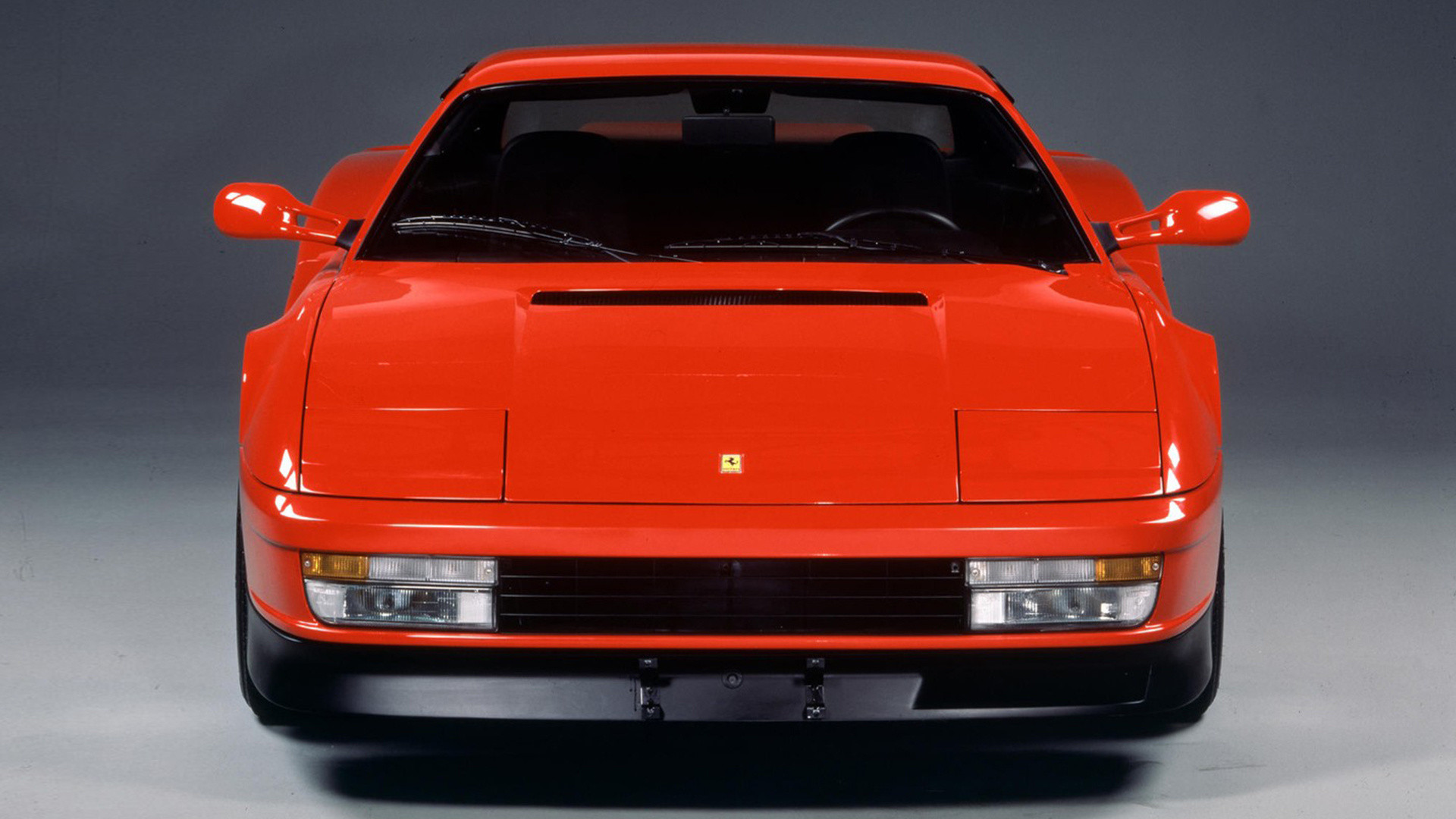
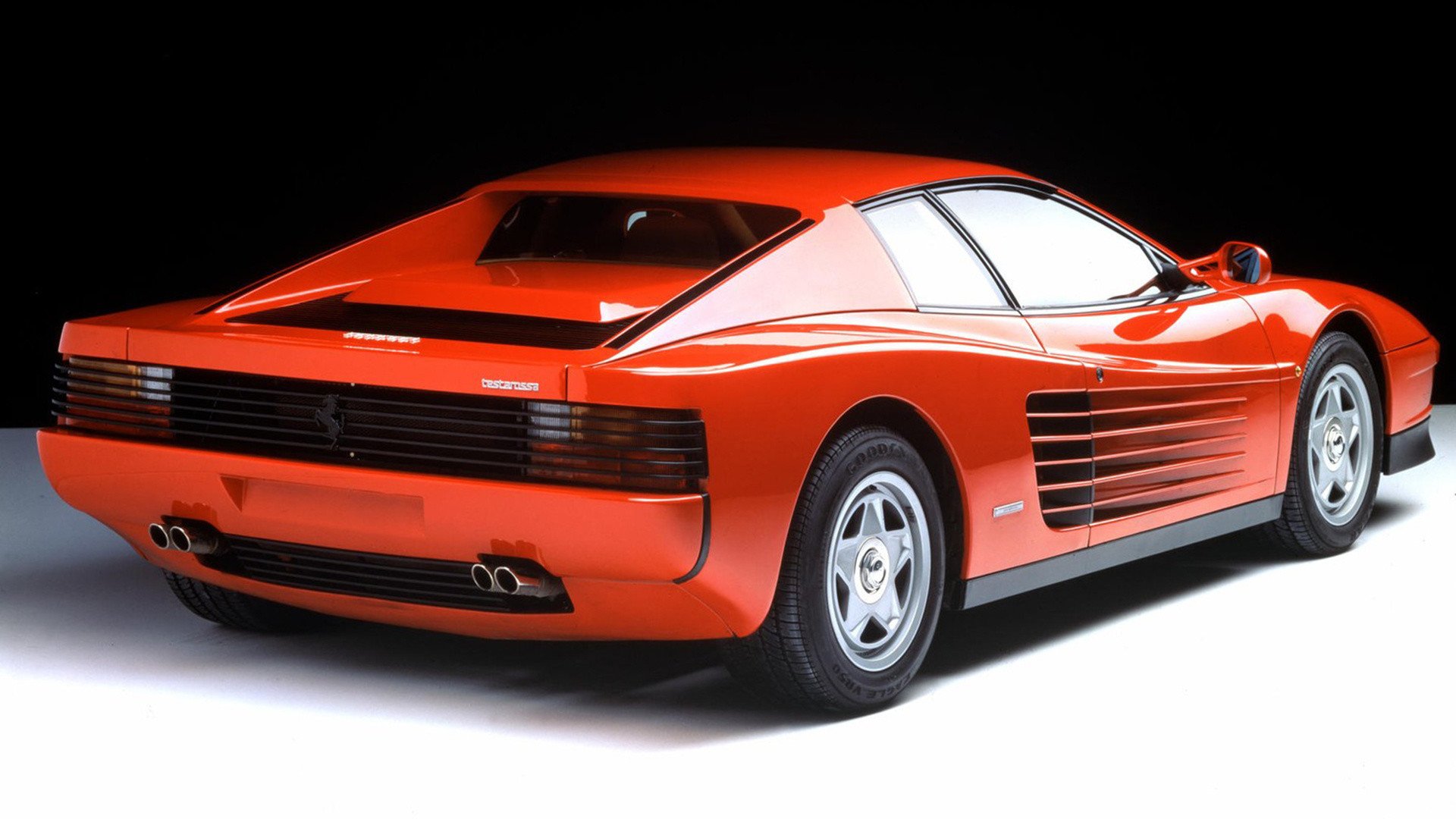
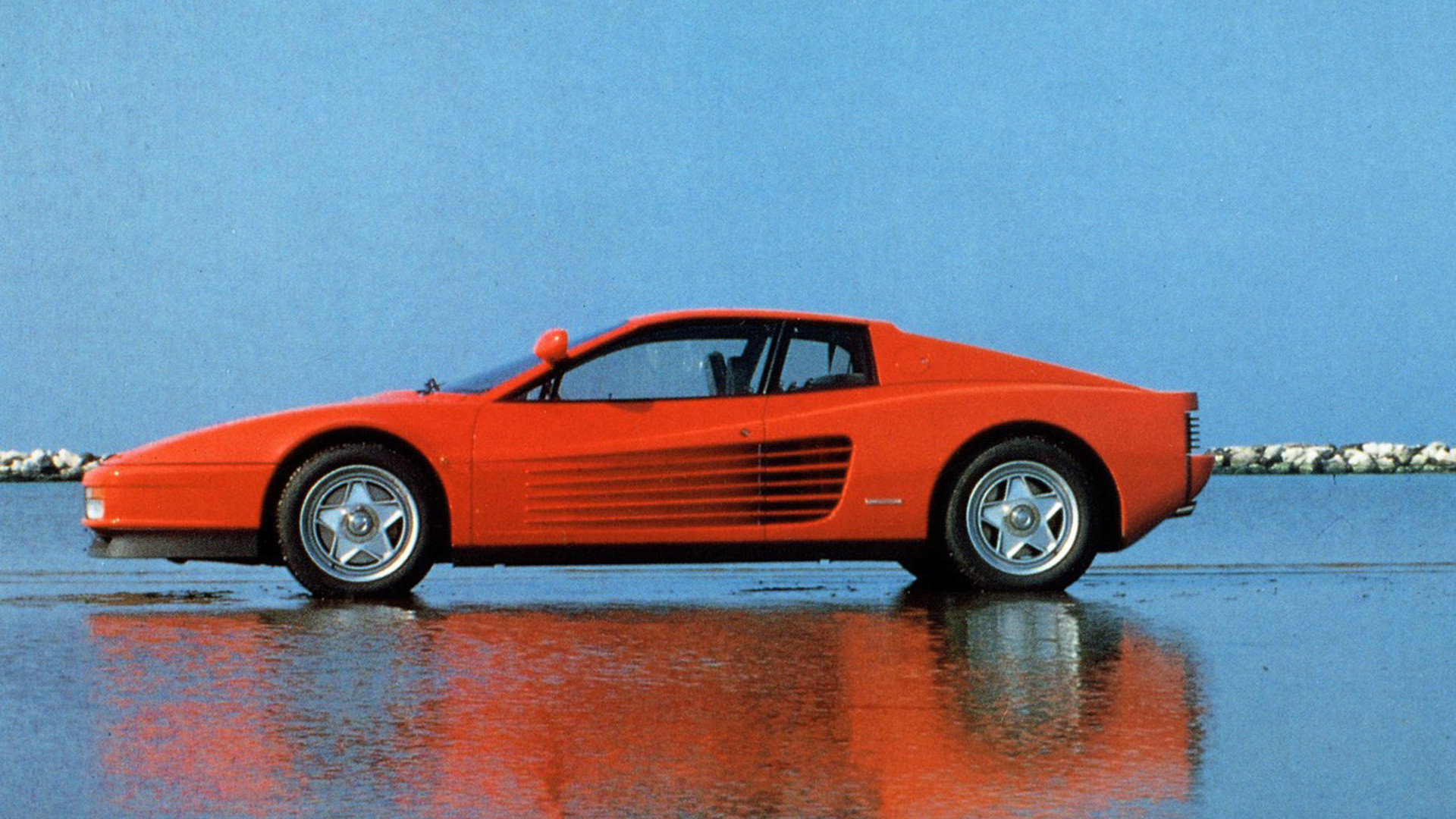

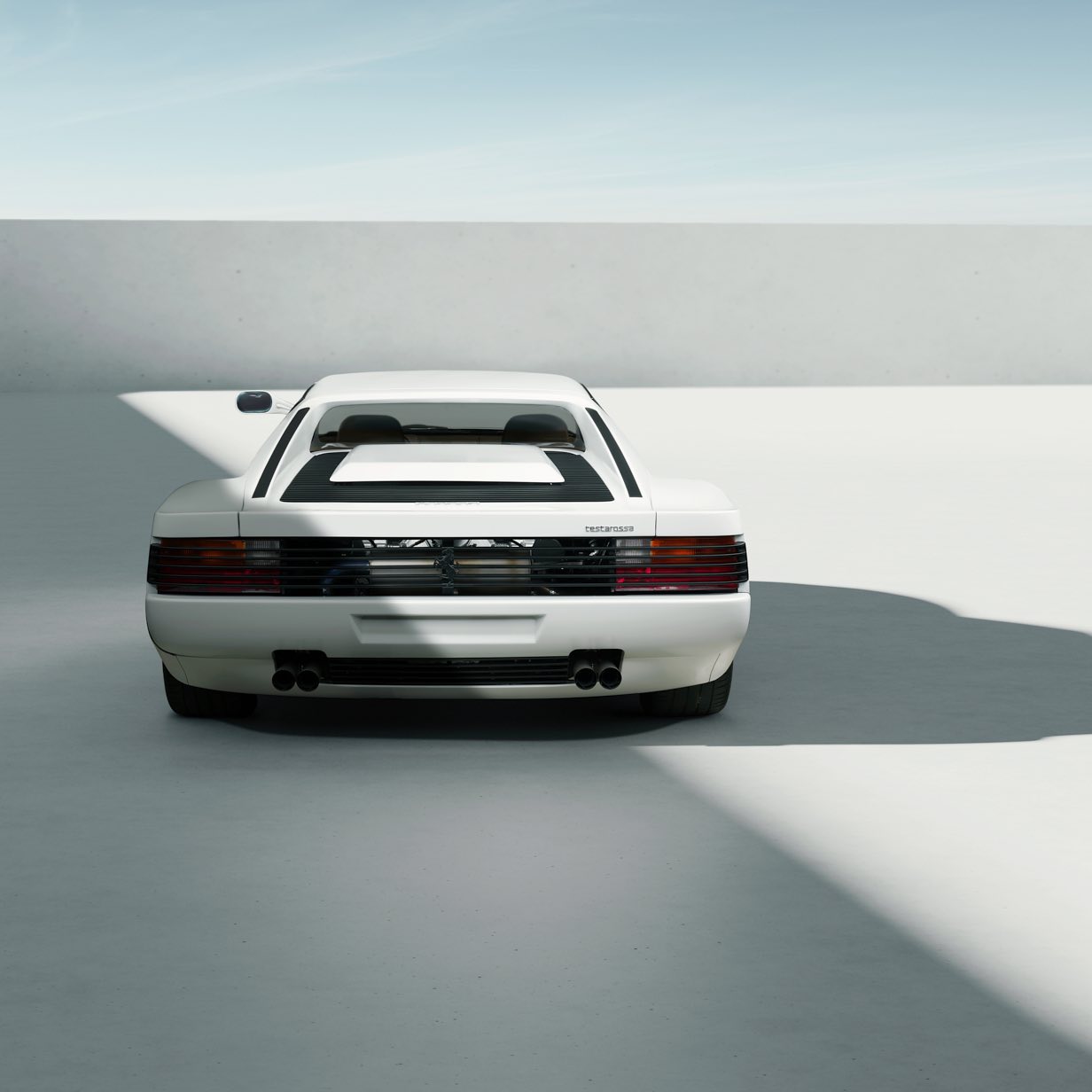
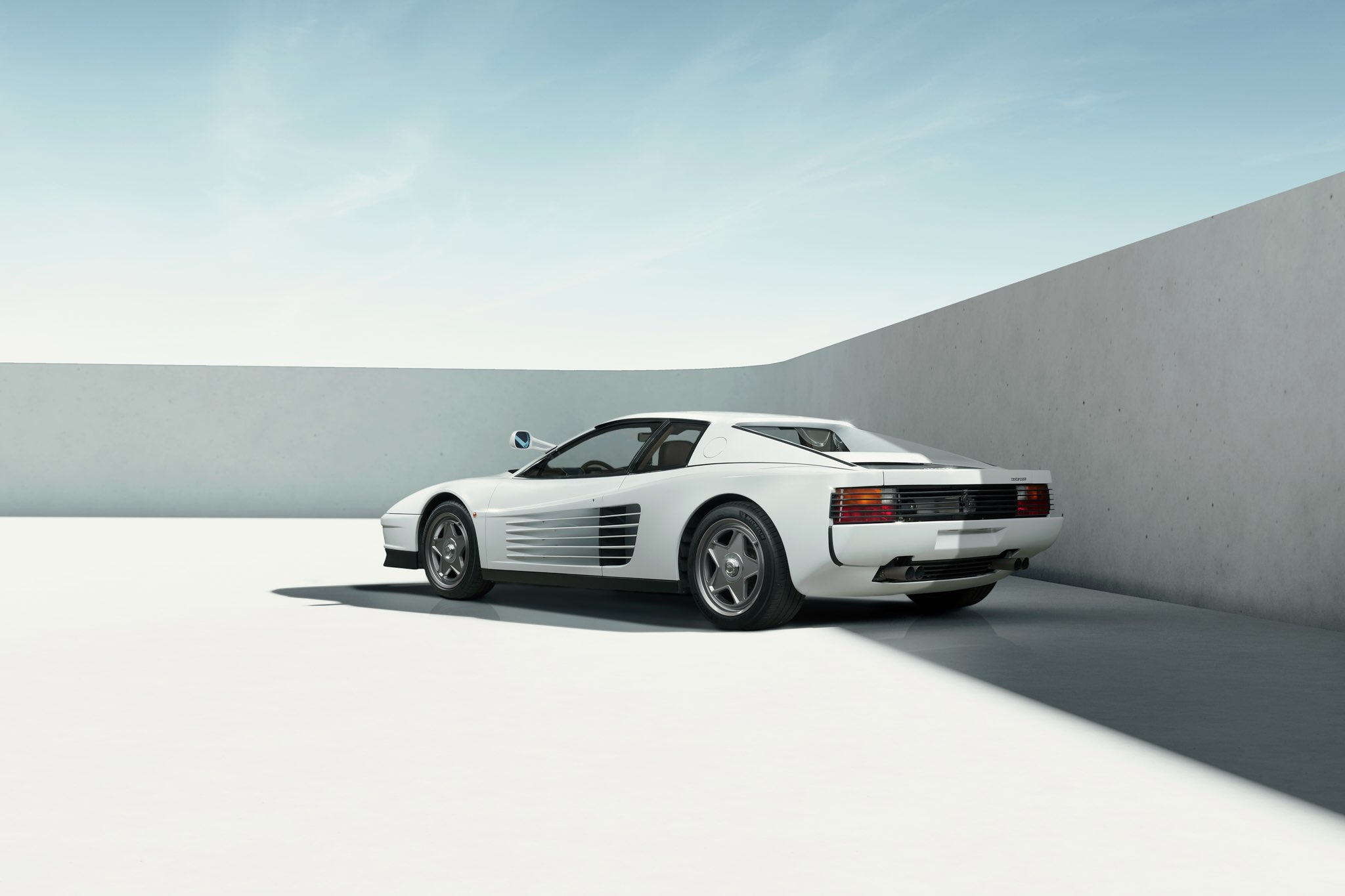
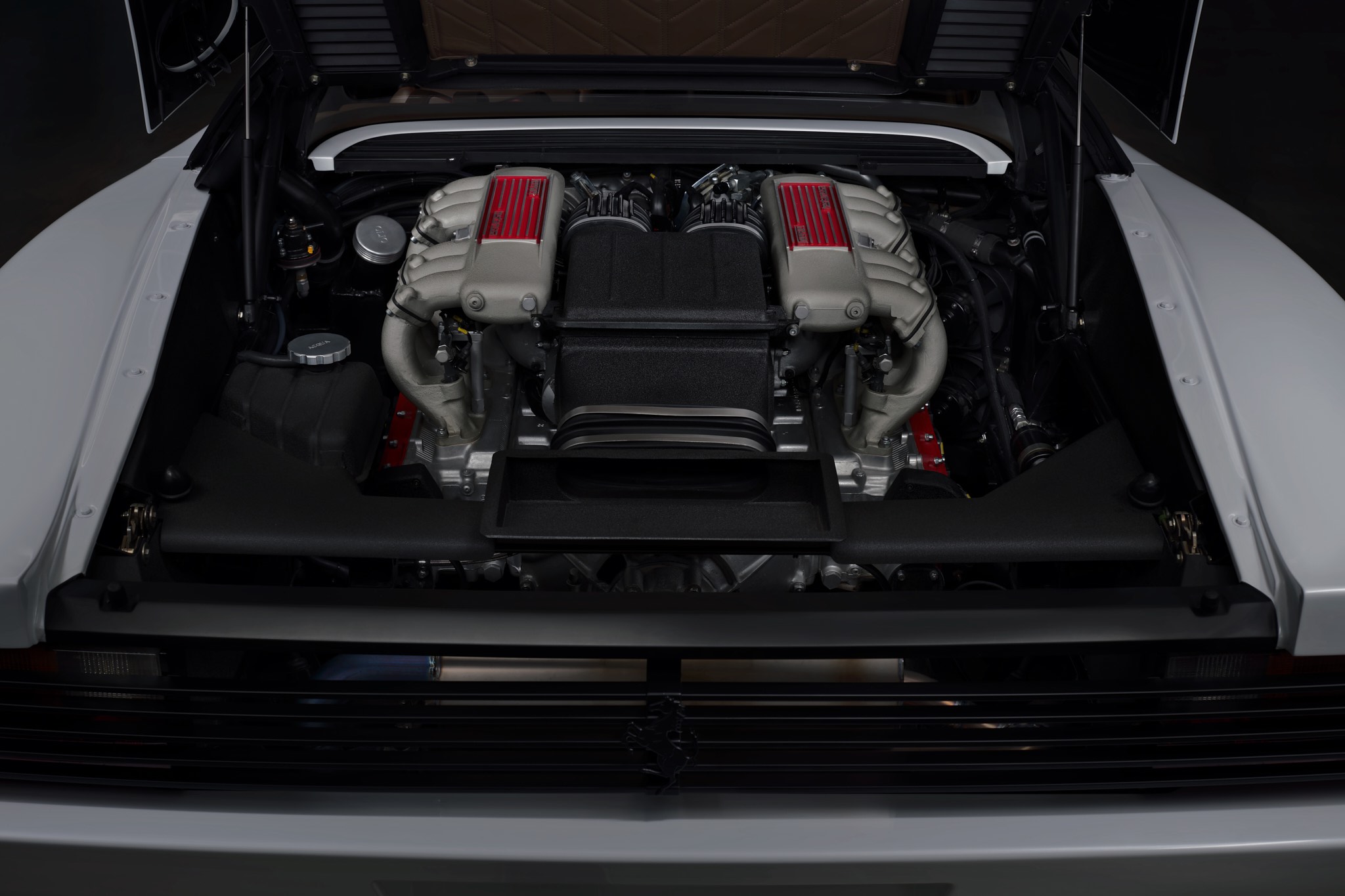


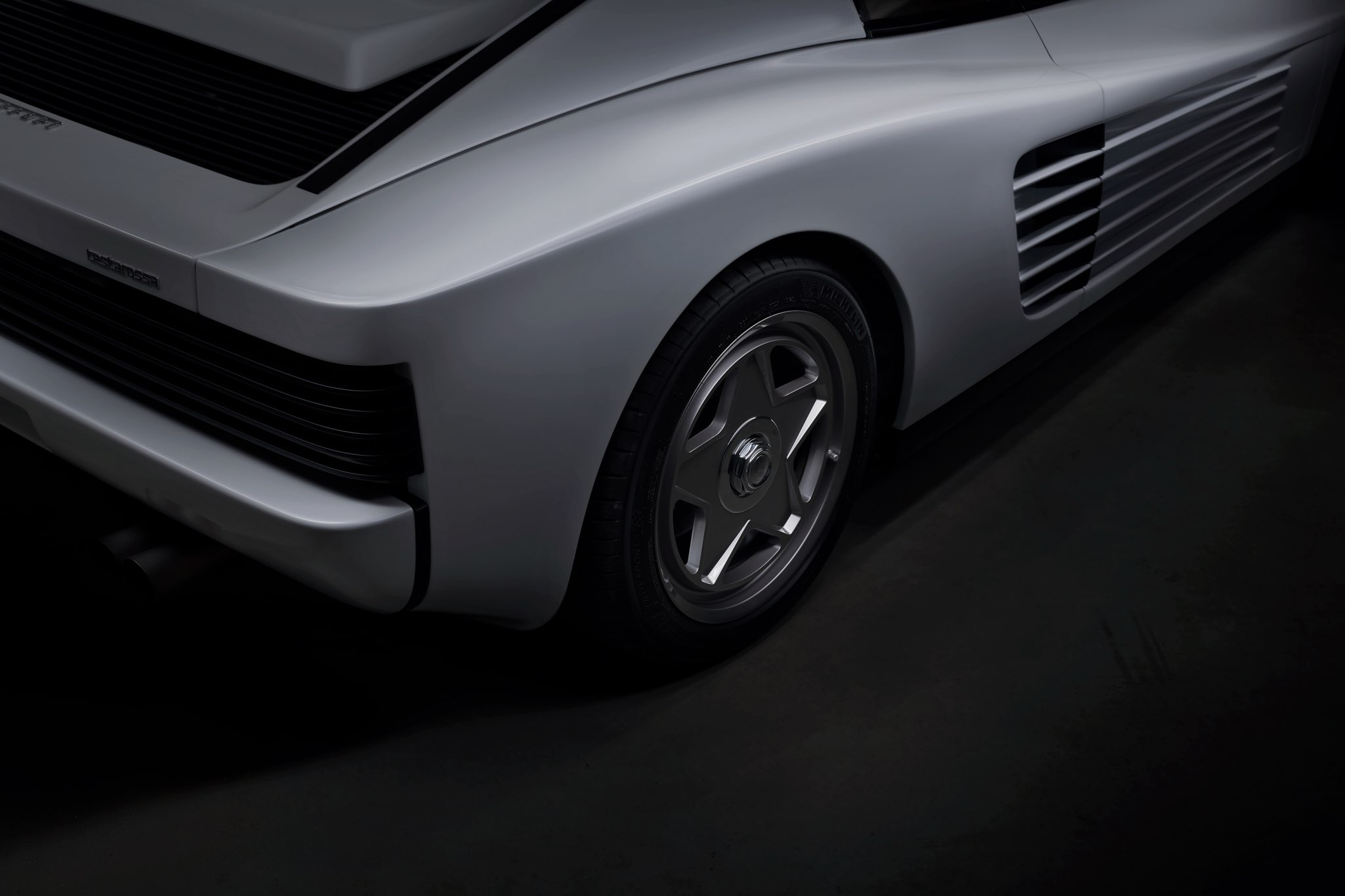
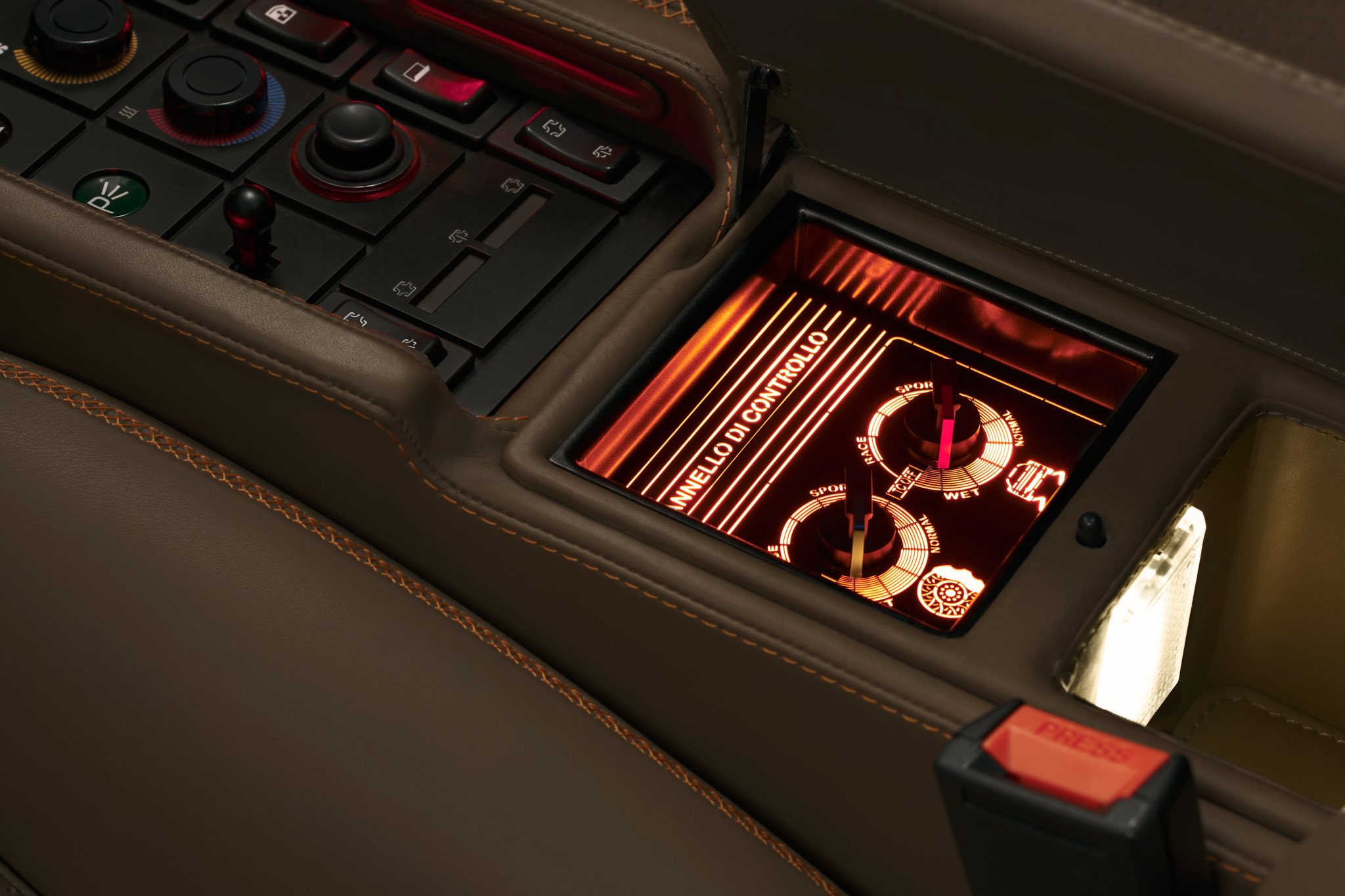
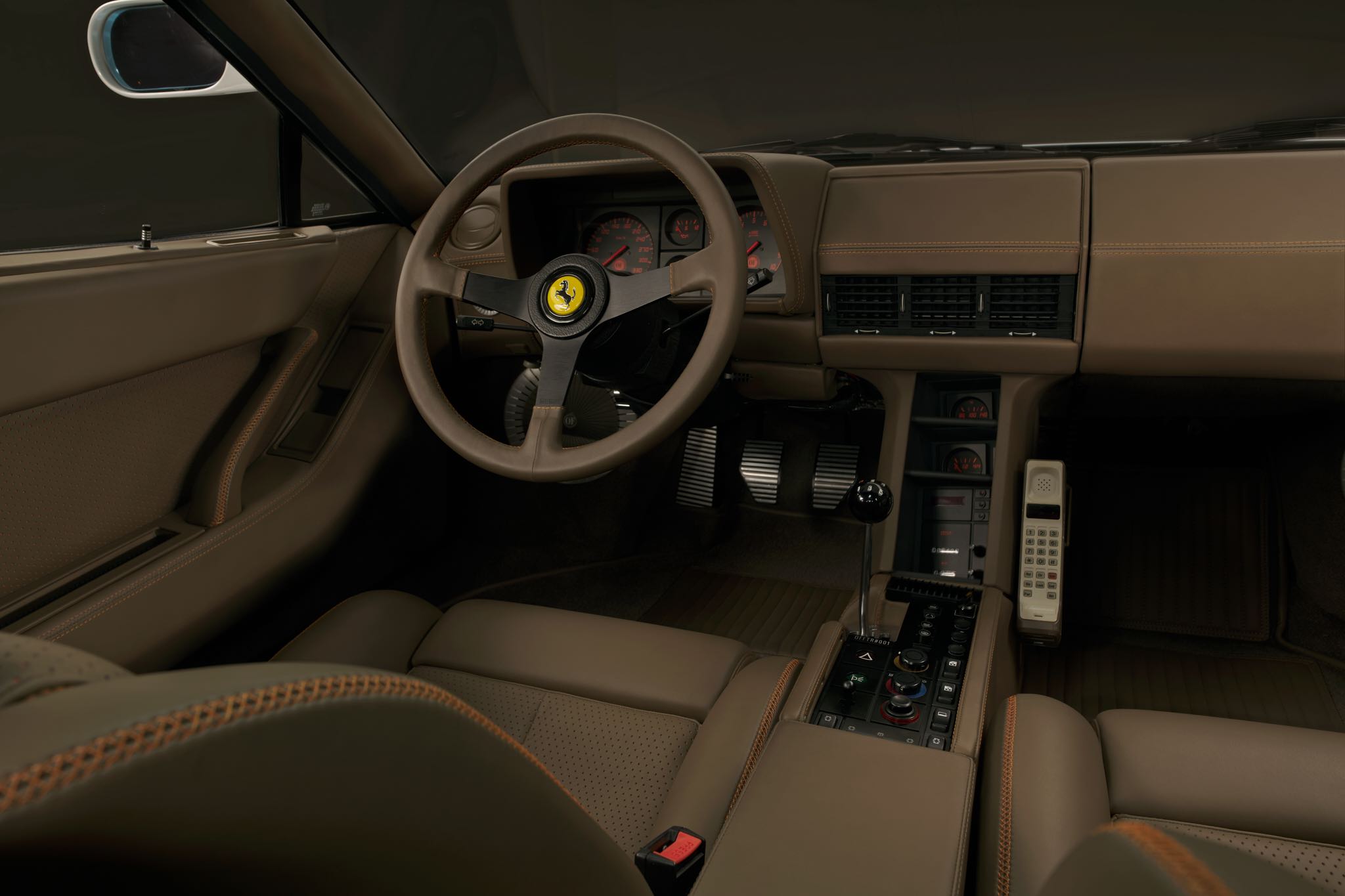
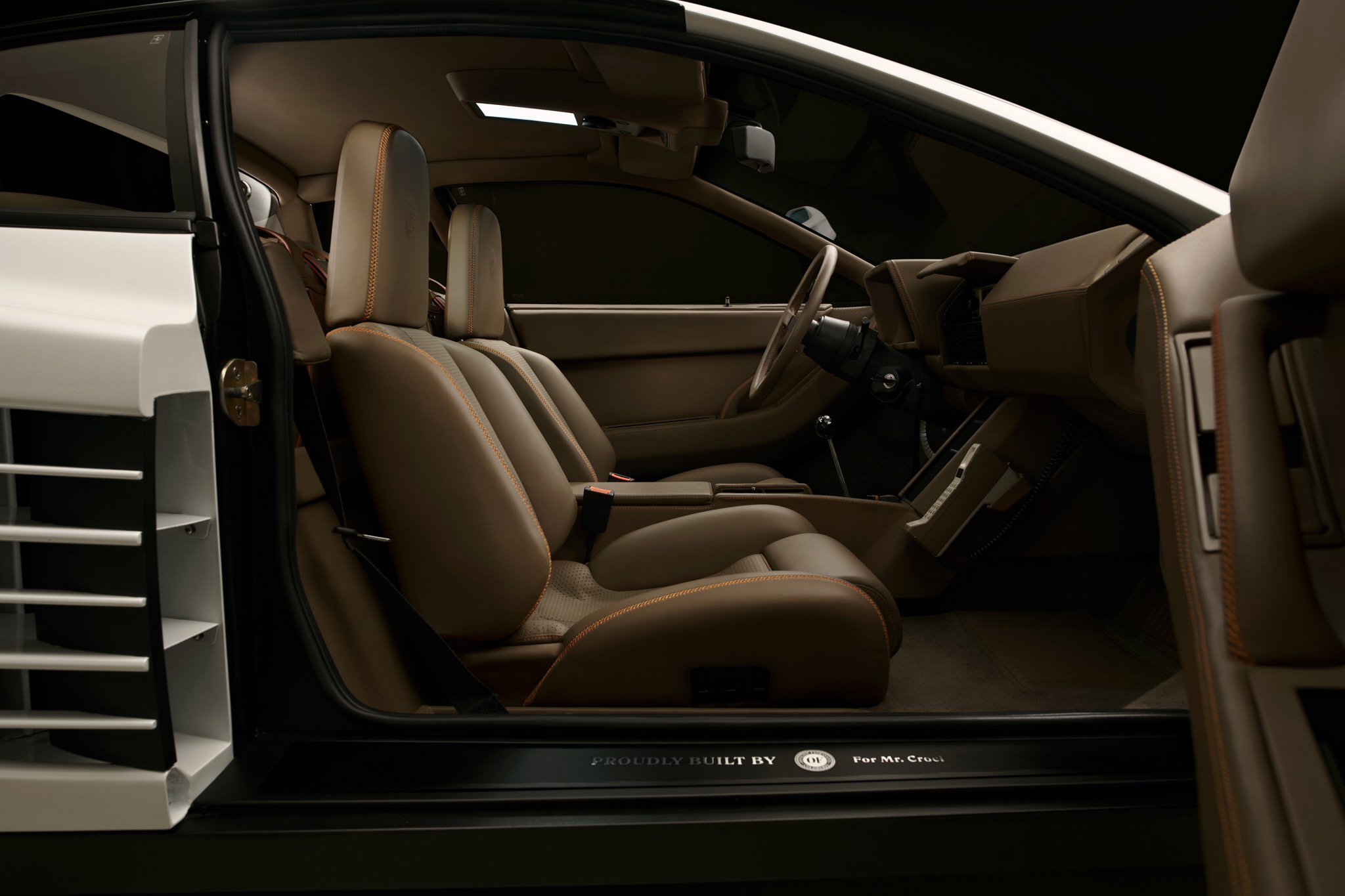
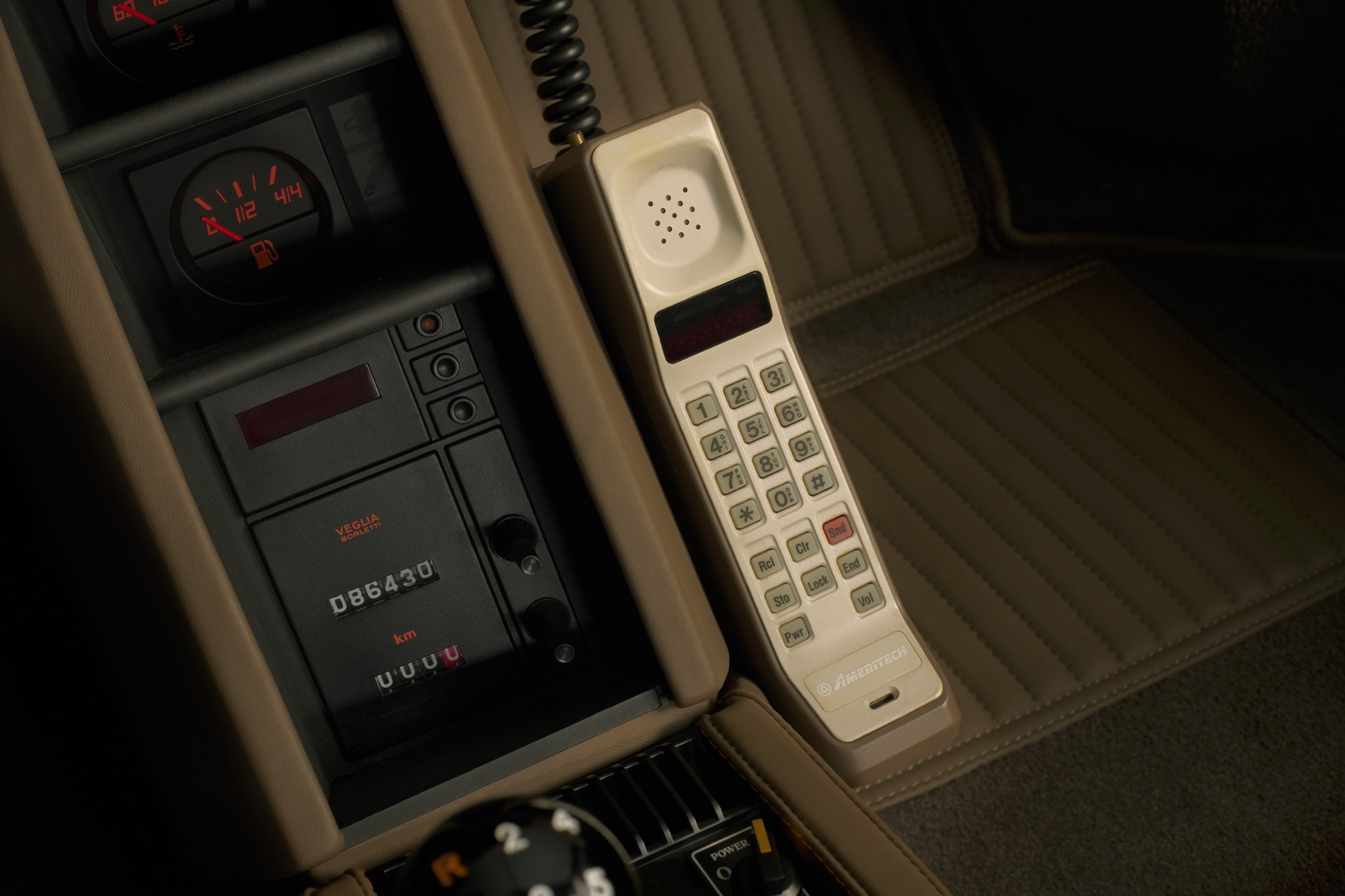



5 responses
Very very tasty and extremely well executed. The price must be stratospheric but I would take this over a singer any day of the week.
The testarossa has never been a hard car to drive. The original car is very driveable around town and even better on the highway. Those who have actually driven the car know this. It’s probably the best Ferrari, easily the most iconic. As far as classic supercars go they are still affordable too.
The single high mount mirror cars (early cars) are not the most sought after like the author thinks. Those cars have a problem. The mounting of the so called (flying mirror) was known to cause windshield cracks due to it’s placement. That’s why it was discontinued.
Never heard that and I have one for 20 years. They got rid of the high mirror for better visibility. Kind of the same reason Chevrolet got rid of the Split Window in the Corvette and we know how that turned out don’t we.
Handling, braking and performance updating must make a huge difference in how this Testarossa drives. The best part is, the car doesn’t appear to be different.